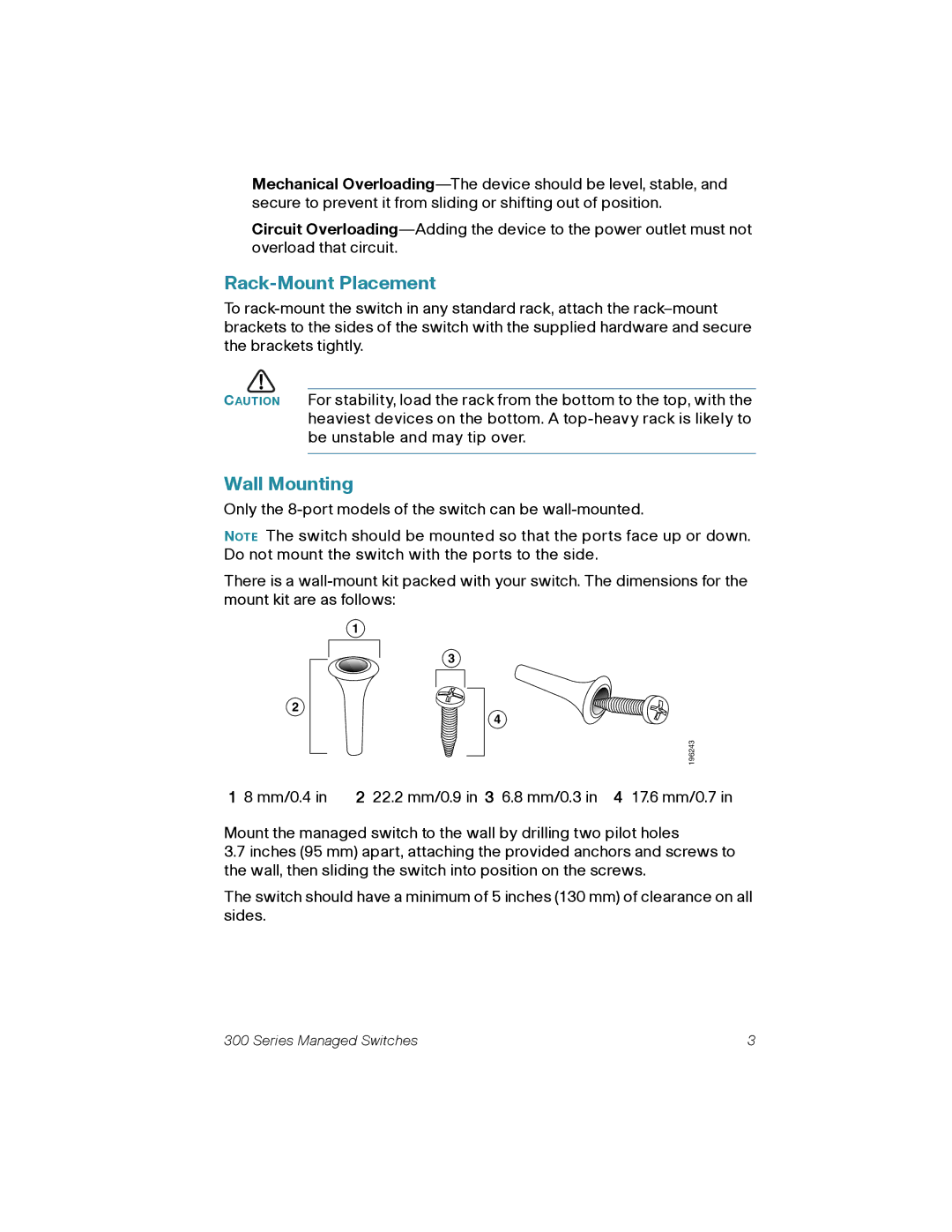
Mechanical
Circuit
Rack-Mount Placement
To
CAUTION For stability, load the rack from the bottom to the top, with the heaviest devices on the bottom. A
Wall Mounting
Only the
NOTE The switch should be mounted so that the ports face up or down. Do not mount the switch with the ports to the side.
There is a
2
1
3
4
196243
1 8 mm/0.4 in | 2 22.2 mm/0.9 in 3 6.8 mm/0.3 in 4 17.6 mm/0.7 in |
Mount the managed switch to the wall by drilling two pilot holes
3.7inches (95 mm) apart, attaching the provided anchors and screws to the wall, then sliding the switch into position on the screws.
The switch should have a minimum of 5 inches (130 mm) of clearance on all sides.
300 Series Managed Switches | 3 |
